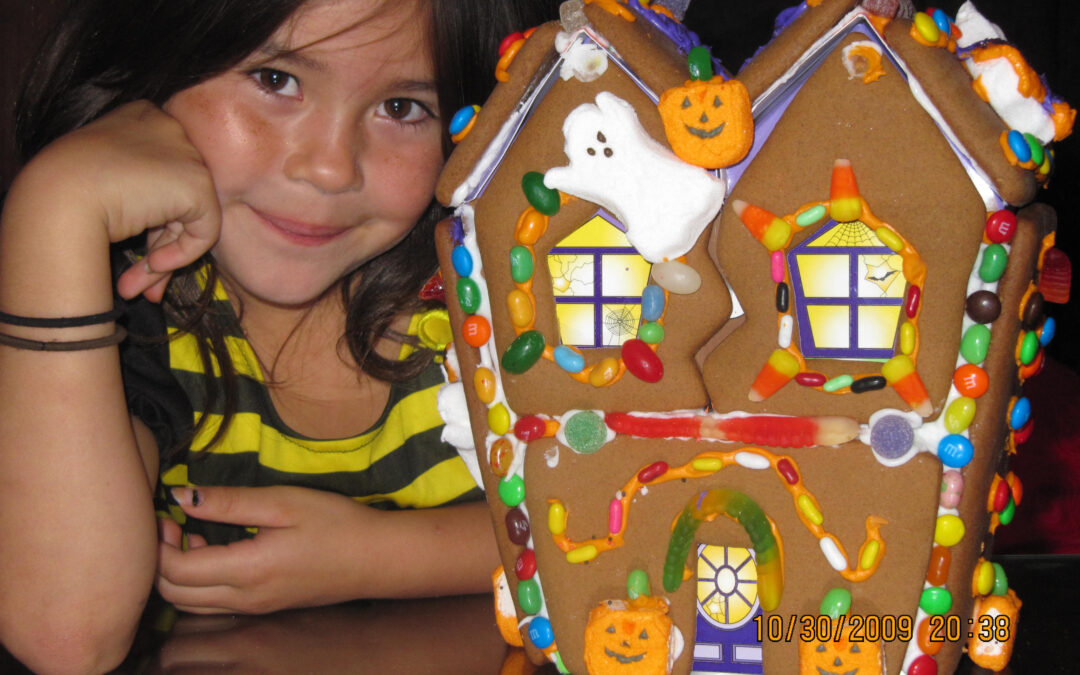
BUMBLEBEE
BUMBLEBEE
The only face missing from the quintet on Arielle’s Halloween scrapbook page is Emma’s—so I wanted to include a picture of her too. She’s wearing yellow and black stripes because that’s the year she was a bumblebee.

The only face missing from the quintet on Arielle’s Halloween scrapbook page is Emma’s—so I wanted to include a picture of her too. She’s wearing yellow and black stripes because that’s the year she was a bumblebee.
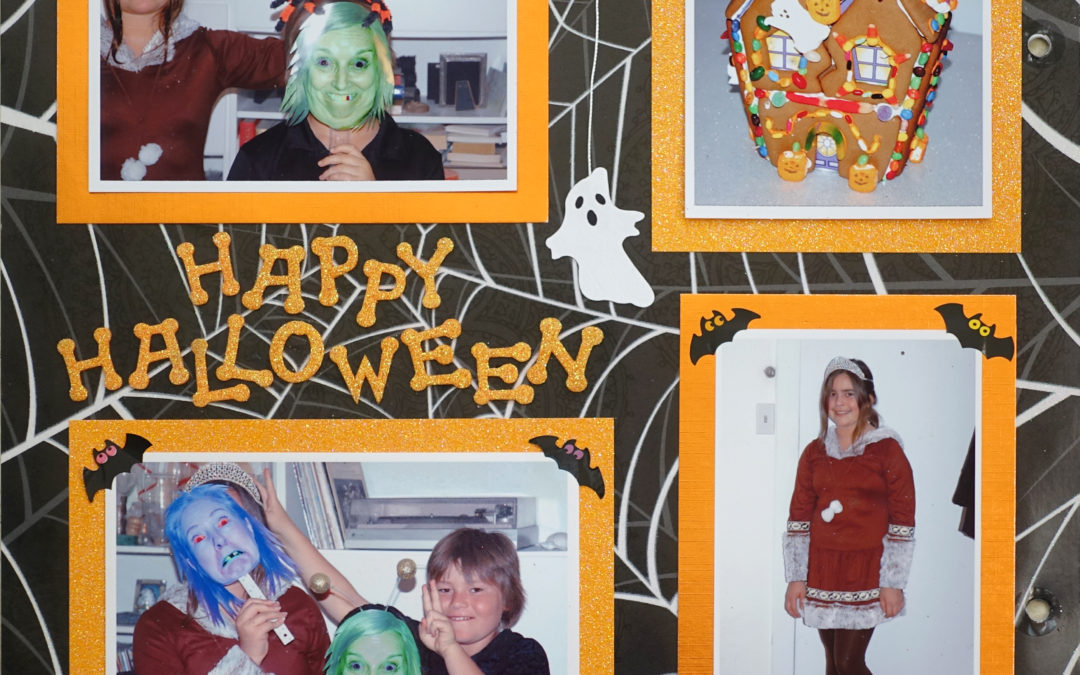
Each year, at my place, my godkids and I made a gingerbread haunted house, using kits I bought at Cost Plus or Party City. We’d decorate it with candy corn, gummy worms, marshmallow ghosts and pumpkins, Skittles, jellybeans, and more. One year I discovered when I opened the box that the pieces of gingerbread were all broken up, so—after I went back and bought another kit—we used the broken shards to create a toothsome graveyard. Of course, the kids always wanted to take their creations home afterwards—and somehow or other Char, their black lab, always managed to savage them. (By the way, Cost Plus carries Halloween packets of “Beanboozled“ Jelly Bellies in flavors like Barf, Rotten Eggs, Stinky Socks, Boogers, etc. I tried only one of these and had to spit it out.)
One year Ella and I took pictures of each other making ghoulish faces. I scanned the photos, enlarged them to life-size in Photoshop, and printed them out on heavy glossy photo paper to make masks. Then we greeted the kids at the door on Halloween wearing each other’s faces. Of course, they were eager to join in the fun. And though it might seem incongruous to some, Arielle decided she wanted to wear the tiara she’d picked out at the Lacis museum—a birthday gift from me—with her Native American princess costume.
Above is the scrapbook page Arielle and I made that year. We used bat stickers to attach the photos to their mats, but, on the gingerbread house photo, I attached the bat wings with small brads, so you can lift the picture and see the surprise underneath—a pumpkin I carved with Michael.
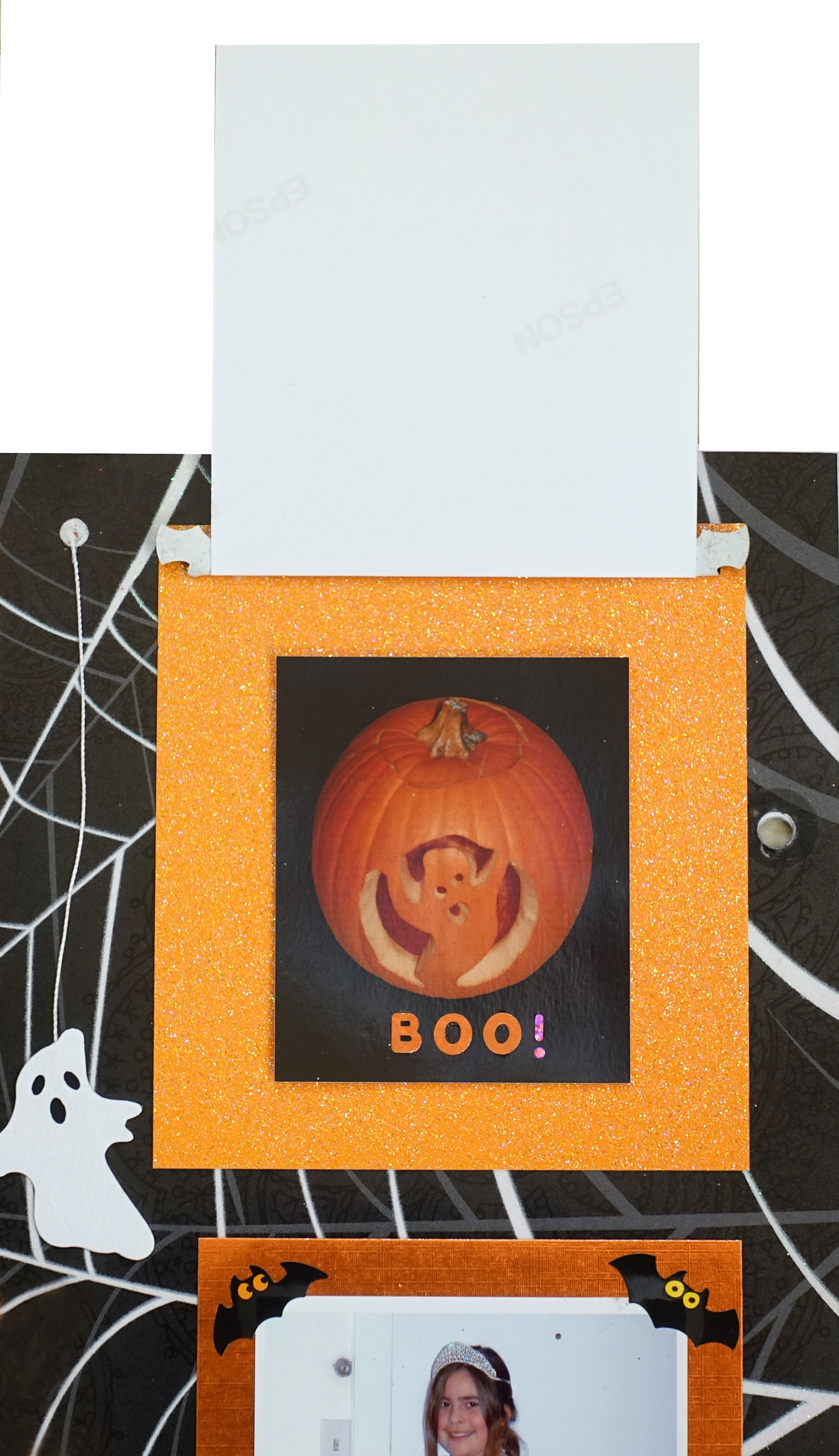

Yesterday Ella and I trekked to our temporary storage room in the basement of the building on the other side of the block to retrieve our Halloween decorations—because I wanted to take some photos for my blog. After removing the padlock and stepping inside, we noticed that the place smelled bad. Maybe because it had flooded again a couple of weeks ago?
On a high shelf, a big sack announced itself as our Halloween bag by the silver glitter hand reaching out of it—so I took it down. Also on the shelf was another bag that I thought might hold more Halloween paraphernalia, but I couldn’t tell because it was too high for me to peer into. I was about to pull it down when I heard a rustling inside. The next moment a big rat leaped out of it and disappeared behind some boxes! Well, that was disconcerting enough that I took my purse and whacked the bag with it to make sure there weren’t any more ghoulish surprises in store—then gave it three more whacks, for good measure. More rustling, and another rat jumped out of it! So I climbed up on a chair to identify what the bag contained—besides the unwelcome intruders, I mean. What I glimpsed were the beautiful Christmas stockings I bought my godkids when they were little. “Oh, no!” I wailed. “The rats are nesting in there! They’ve probably chewed the stockings to pieces!” I felt I had to get the bag back to our apartment to assess the damage and prevent any further defilement, but before I could, a third rat flew out, nearly scaring me off balance. Well, that was just too much of a bad thing—for both Ella and me. We fled.
Above and below is some of the Halloween paraphernalia we managed to bring back. (The white piece of cardboard behind the candelabra is covering the huge unsightly fuse box the electrician just installed in the middle of our living room wall.)
Each year I used to set a festive table, so the kids could have a meal before going trick-or-treating and stuffing themselves with candy. In the photo above, however, the extra leaf for the table is missing because it’s in the rat-ridden storage room—and the exterminators still haven’t come.

spider napkin rings
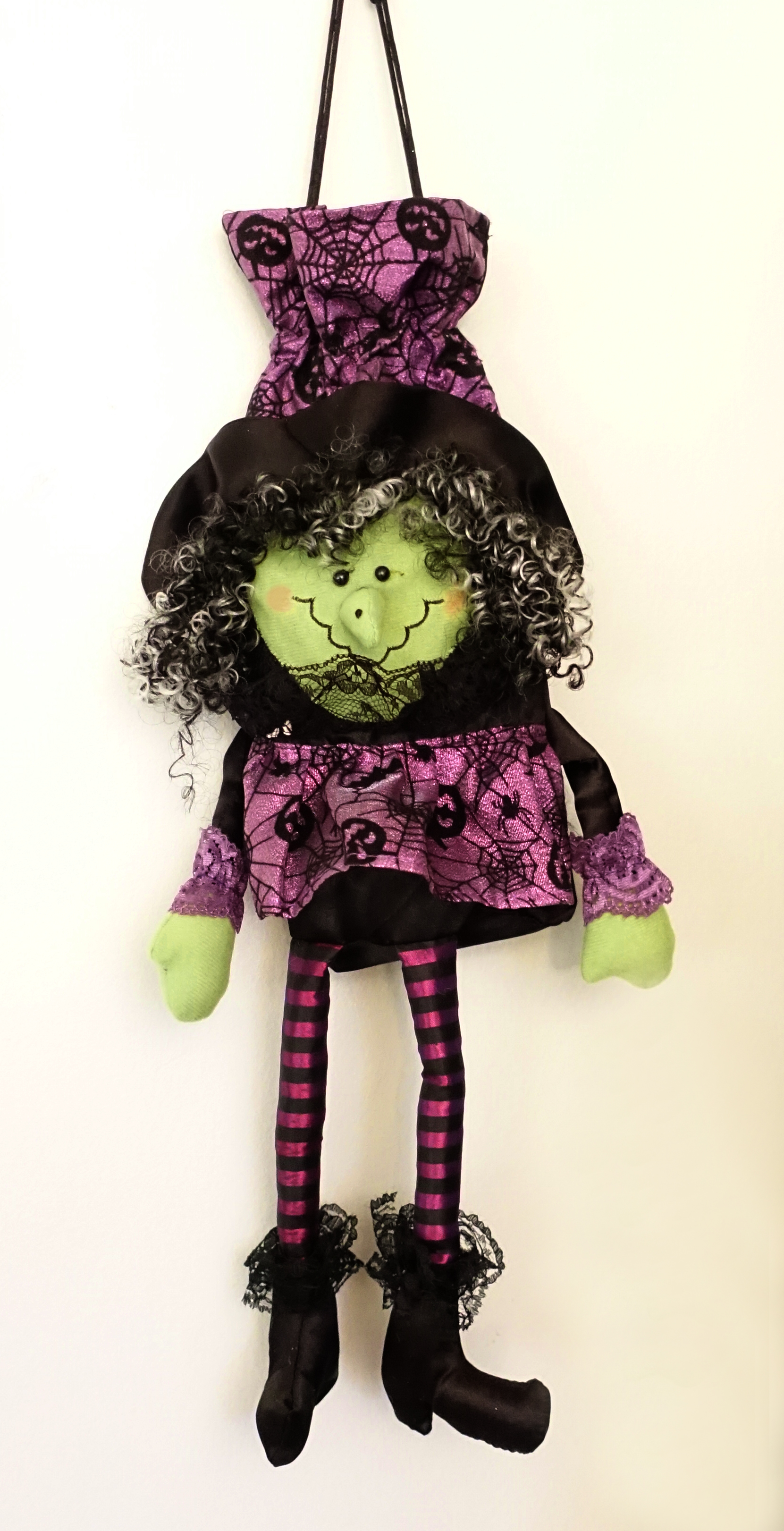
a drawstring witch purse

When I was four, we moved to New Haven for a year so my dad could get his Ph.D. in philosophy at Yale. Doug and I went to an all-day preschool run by three black women. I loved Miss Green, while Doug’s favorite was Miss Brown.
For the first months back in Minnesota, when I was five, we were unsettled. I went to two different kindergartens before we rented an old two-story house on Dudley Street in St. Paul, and I started attending Gutterson Elementary School—“Gutterdump,” as the kids called it—a staid, old-fashioned red brick building with an asphalt playground. It was there I was sent to the principal’s office, not to be disciplined but to show her the drawing I’d done of my class having a parade. Her office was on the second floor, however, and when I reached the top of the stairs and looked around, I couldn’t tell where I was supposed to go. So I went back downstairs and only pretended to my teacher that I’d done what she asked. (I no longer know what my parade drawing looked like, because the first example of my artwork in my childhood scrapbook is a turkey, also drawn when I was five. Just for the fun of it, I’ve updated that turkey and plan to post both versions in my upcoming Thanksgiving blog.)
Another memory I have, besides being scolded once for whispering during nap time, is of asking a first grader on the playground if it was hard to learn to read—because I was already anxious about my ability to master this skill.
The Dudley house had a row of pink peonies on one side of the front lawn. (I still remember the sticky sap on the buds and how they swarmed with ants.) There was an ample backyard, where we had a swing set—and where my dad built a snow igloo that winter for Doug and me to play in. Behind the garage, a previous tenant had planted corn, melons, and asparagus that we ate—well, except for the melons, which usually were stolen before they were completely ripe. My dad got my brother a black lab we called Blackie and a black cat for me, Timmy.
On Halloween I went in costume to our next-door neighbor’s house by myself, and when Mr. Landis opened the door, I said “Trick or Treat,” as instructed. Instead of giving me a treat, however, he said, “What’s your trick?” Confused and bewildered, I turned and ran home.
For Christmas we got a tree so big that Dad had to cut off the top. One evening we went to downtown Minneapolis to see the windows of Dayton’s Department Store, where they had festive scenes like Santa’s workshop with mechanical elves.
Sometimes Dad would have to stop by his office on our way home from somewhere. We would drive through “Dinky Town,” where the college kids hung out, a name I’ve always remembered because it seemed so cute to me. Then my dad would park behind the Philosophy Dept. building and Doug and I would wait in the car for what always seemed like an eternity. My father never actually took us inside, so I have no idea what his work environs looked like.
Before Easter that year, when just my dad and I were in the car, he stopped at a store and came out with a pink box. He said he’d bought a cake and put it in the backseat. But I could have sworn I heard sounds coming from the box. It wasn’t until we got home that I discovered he’d bought me a little duckling.
He made a tiny cage for it—a foot square, out of wood and chicken wire—that we kept out by the garage. When I let my duckling out of its cage, it would chase me all around the yard, which delighted me.
But then our neighbor, Jack Landis, told my father that it was inhumane to keep a duck in such a small enclosure. My father claimed at the time that he called some expert at the Farm Campus of the university who assured him that it wasn’t inhumane. Though my father was fascinated by animals, he was convinced that they didn’t have feelings, a hard thing for me to understand since they so obviously do. In a similar way, he would renege on his promise to pay for my braces years later, claiming my dentist had assured him that having protruding teeth wouldn’t damage my self-esteem, and, even more years later, when I insisted that sexual abuse was always hurtful to children, he would claim that the “foremost expert on child development” had reassured him that it wasn’t.
I gave my duck to the Como Park Zoo to live out what I hoped was a happy life, and to this day, I’ve never eaten duck.
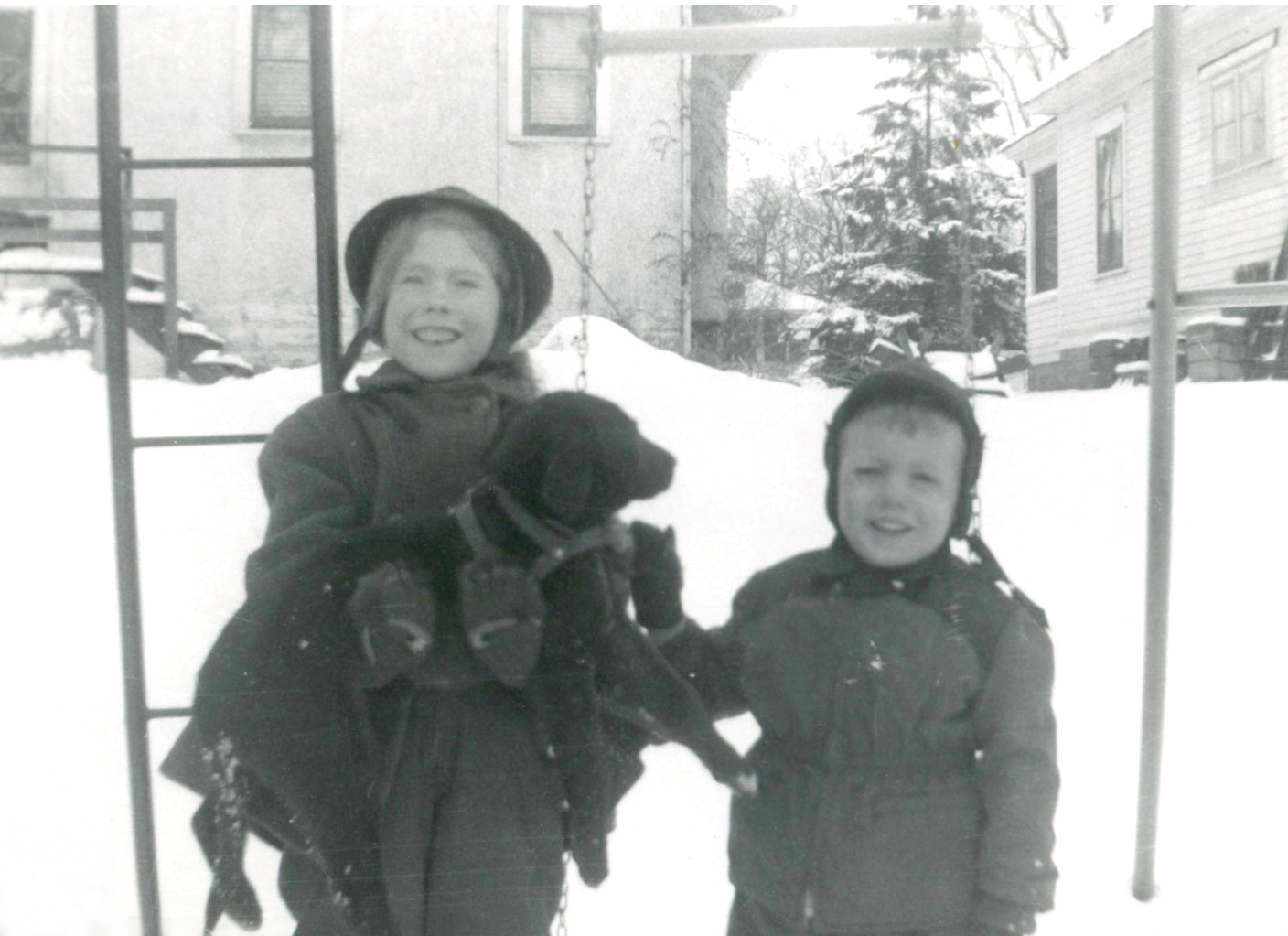
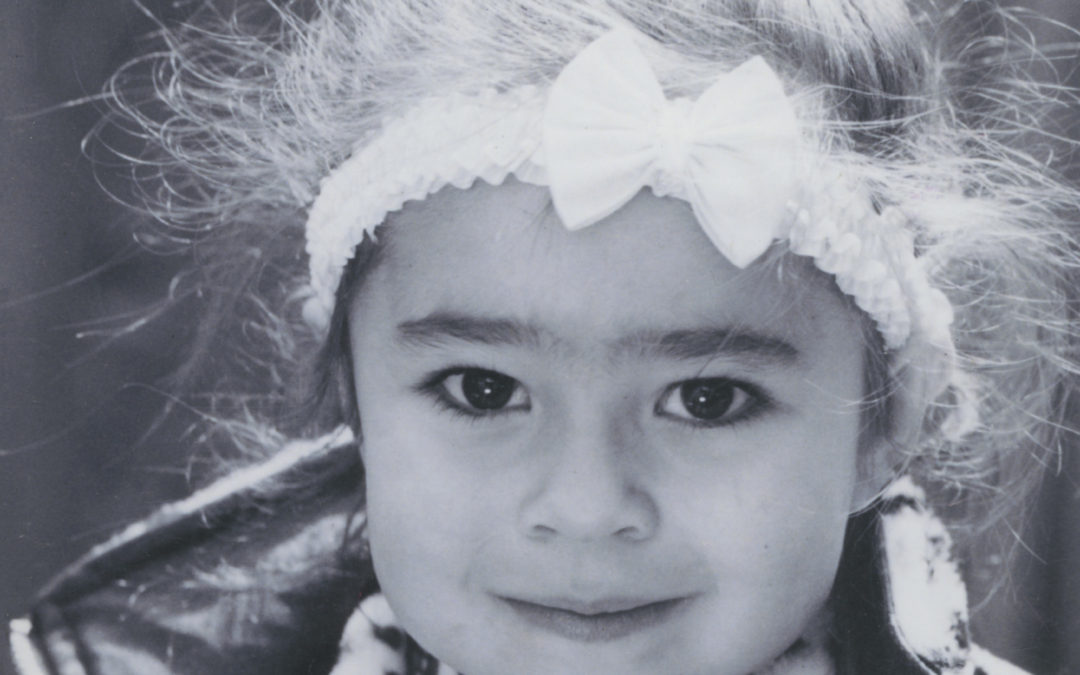
And speaking of Lake Anza, in A Patchwork Memoir I wrote about another outing with Arielle, after Michael was born.
Leia and I are bundling Arielle, Michael, and all the lake gear into the car (which has got to be 150 degrees)—not a small production. There’s a large tote bag stuffed with diapers, swimsuits, towels, and food—things like rice cakes, sliced melon, and pistachios—a plastic hamper full of beach toys, plus the two inflated floats I bought. Of course, Arielle insists on bringing them both, and, as any parent knows, a two-year-old’s word is law.
But when it comes time to climb in the car herself, Leia can’t find her keys. “What did I do with them?” “I don’t know—I saw them in your hand a minute ago,” I say. We search fruitlessly between the car seats and among the bags until suddenly I spot them lying in the street near the curb. “Oh!” says Leia. “I forgot I dropped them.” Now at certain times of the month, I forget what I’m saying mid-sentence—again and again in the same paragraph—well, actually I don’t know if I’m in the same paragraph because I lose track of the subject I was discussing too, but anyway… I have an excuse—I’m peri-menopausal. Leia used to have one too; now she has two.
At the lake Arielle tries to put on her sunglasses upside down. We sit by a little inlet at the water’s edge that other kids have dug earlier. I bought Arielle some plastic fruit to put in her toy shopping cart, but, worse than a toddler when it comes to delayed gratification, I gave it to her even though I knew we were going to the lake. Now the miniature oranges and bananas and strawberries keep floating off, and one or the other of us has to chase after them.
The water is much clearer now than it was. It’s October and not many people are coming to the lake, though we’ve been having the hottest spell of the year. So it’s easy to see things lying on the lake bottom. It could be because the water isn’t so roiled up, but it could also be because the algae has died back. Yeah, come to think of it, my hair hasn’t been smelling so foul lately.
We go looking in the shallows for whatever we can find—leaves, stones, twigs, eucalyptus “acorns”… When I first plucked one of these out of the water last month, Arielle started to shriek. I think she thought it was some sort of big bug. Even now, I have to pick up each one first—she has to see that it doesn’t bite me, I suspect—before she’ll take it and throw it as far as she can, maybe three feet. This is the age kids start developing fears, Leia tells me.
When we took Arielle on the little steam train in Tilden Park last Sunday, she cried out “Mamia!” and shrank against Leia, keeping her face averted, her eyes as low as possible without actually closing them. Whenever the engine belched steam, she whispered, “Fire!” and refused to be reassured she was safe. Now I ask her, “Do you see any fish?” “No.” “Do you see any turtles?” “No.” “Do you see any crocodiles?” Serenely, “No.” There are fears and there are fears.
I ask her if she wants to build a castle. Again, “No.” She’s very definite about what she wants and what she doesn’t, her noes emphatic, her yeses as musical as birdsong. Bedeviled by indecision myself, I envy her her clarity.
“Hmmm…well… what else can we find?” I muse. “Hmmm…well…what ess can we find?” she mimics my intonation exactly, crouching down just like I do, my little shadow. If we all stayed as good at imitation as we were as toddlers, I think to myself, Robin Williams would be out of a job.
Leia snoozes for a while with Michael on a blanket in the shade, but when she brings him down to the water, a slender little blond girl comes near to peer at him. Possessively, Arielle rushes at her and pushes her away, then plants a kiss on Michael’s forehead like a flag, claiming him as her territory. “I’m not going to take him away,” the little stranger explains reasonably. Whereupon Arielle, mollified, lets her approach and watch Leia breast-feeding.
In Balinese culture, I’ve heard, they consider babies still so close to the divine that for the first six months they don’t even give them names; they don’t consider they belong to their parents or to the earth yet.
And that’s how Arielle appears to me—still brightly illumined by the divine.